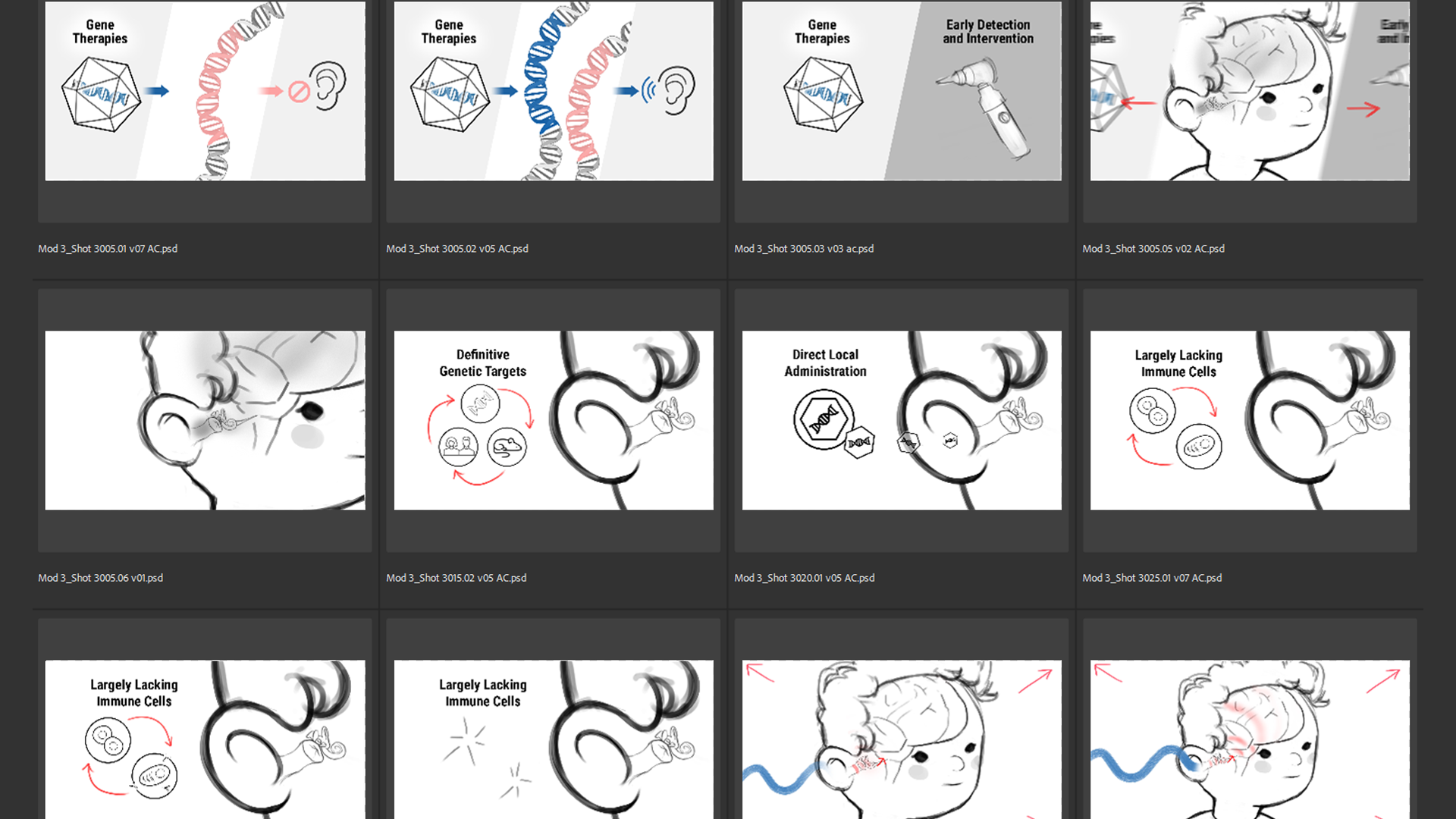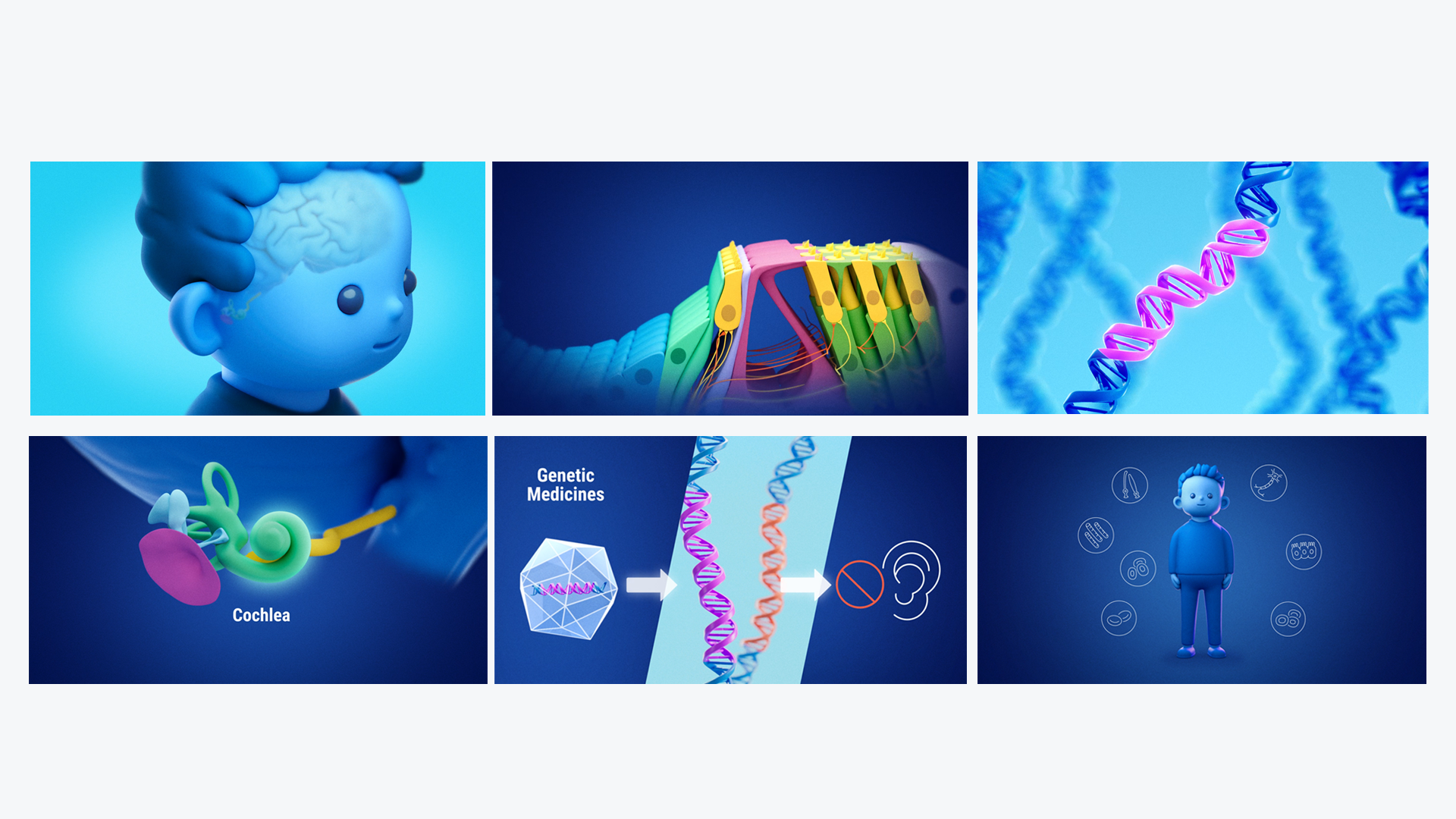3D Animation: Understanding Hearing Loss and Targeted Therapies
About the project
Our team developed a 3D patient-focused animation that explains the intricate process of how we hear and highlights how genetic variants can impact hearing. The animation walks viewers through the anatomy of the ear, demonstrating how sound travels from the outer ear to the brain and identifying the points where genetic mutations can disrupt this process.
The animation also explores how targeted therapies can address these genetic variants, offering potential solutions to restore hearing. Our goal was to create an accessible, visually engaging, and scientifically accurate narrative that empowers patients with knowledge about their condition and treatment options.
Our services
Research
Storyboards
3D model development
3D animation
Motion graphics
Voiceover talent scouting
Final video edit and sound mix
What our client provided
Scripts
Review feedback
Our process
Research and Scientific Understanding
The first step in our production process is thorough research to fully understand our client’s science story and the background science related to the topic. This ensures that our visuals and animations are both accurate and engaging.
Because of the complexity of the cochlear anatomy, our team conducted sketchnotes to problem solve and better understand the key structures in this anatomical region.
Black and White storyboards
Our team begins animation production with black and white storyboards to help us problem solve important on-screen text and visual elements to help tell the science story effectively. We have a few rounds of black and white boards with our clients to obtain their feedback.
3D asset and scene development
After the storyboard was approved and finalized, our team moved on to building 3D scenes. We utilized the client’s existing cellular models where possible and created additional assets from scratch to ensure visual consistency and scientific accuracy. This preparation phase was essential in laying the groundwork for a seamless animation process.
Animation Round 01
In animation Round 01 our team blocks out all motion graphics and 3D animations in time with temporary/scratch voiceover. The 3D elements are renderd in greyscale. This provides our clients with an opportunity to see everything in motion for the first time. At this stage we look for timing lock on the animation.
Style frames
During the greyscale animation phase, we provided still image style frames to explore various color and style options for the models. These frames allowed us to experiment with figure opacity, label design, and molecule colors, ensuring that the final look aligned with the client's vision and maintained scientific clarity.
Before moving into the full-color animation phase, we rely on our clients to provide feedback on the style frames. Their input helps us refine the visual approach and ensure that the final animation meets their expectations and scientific requirements.
Animation Round 02 and 03
In animation Round 02 we implement the client’s valued feedback notes and begin full colour animation production on the 3D elements. The motion graphic elements are refined futher and we deliver a near final animation with temporary/scratch voiceover and music.
We provide this near final animation for the client to review and sign off for profesisonal voiceover recording.
We then conduct a professional voiceover recording session with a voiceover artist and implement the final voiceover with a clean sound mix.
We then deliver the animation for final delivery!





